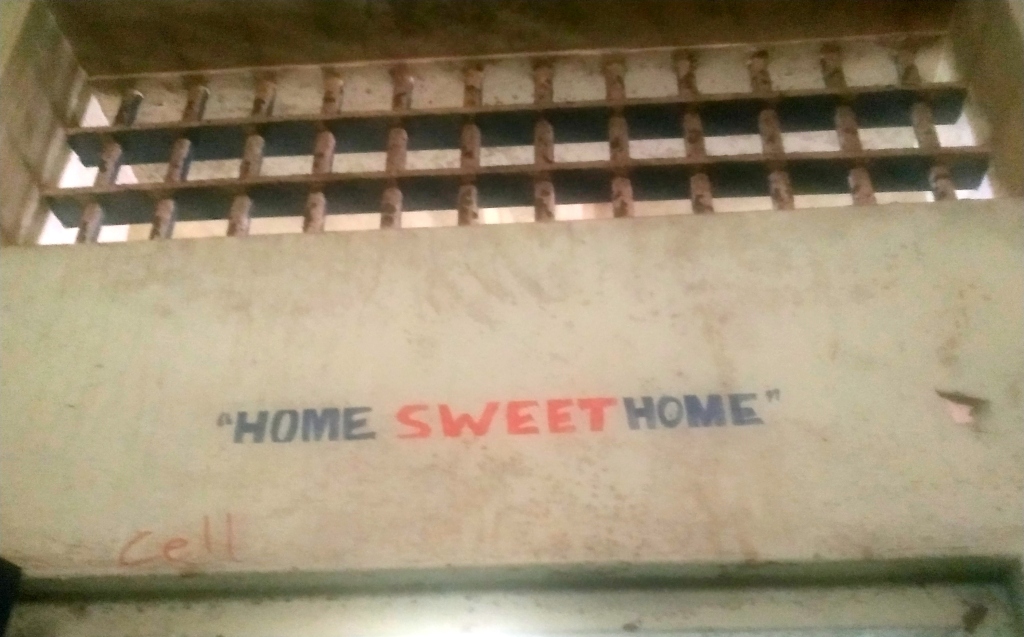I am so excited to be writing this piece! I feel exhilarated whenever I happen to visit an underrated attraction in an otherwise touristy place. The ‘Boggo Road Gaol’ in Brisbane is definitely one of those places. It usually doesn’t show up among the top 5 or even top 10 things to do if you do a general web search. After visiting some of the typical attractions in and around Brisbane like the Lone Pine Koala sanctuary, Gold Coast, Story Bridge and the cultural precinct of Brisbane city, I was on the hunt for hidden gems. On an impulse I booked a ticket online at 10.15 for the 11 o’clock tour! I had to rush to get there in time. Heather, our guide, was already ticking off names from the guest list when I arrived. I happened to be the only solo traveler on the tour, the rest were mostly families with children on school holiday.

The children listened wide-eyed and open-mouthed at some of the thrilling and gruesome stories Heather regaled us with about this infamous prison and its inmates. Officially called the Brisbane Prison when it was established in 1883, this place earned its name due to the Australian penchant for nicknaming everything. The road leading to the prison would turn into a bog whenever it rained, giving birth to the name that stuck. The prison complex originally had three separate divisions of which only No. 2 Division still stands and has been converted into a heritage site. The No.2 Division used to house female prisoners up until 1903 when the women were shifted to another building on the premises and the notorious men from the St Helena island prison were brought in to occupy it instead.

One of the most well-known prisoners was ‘Slim’ Halliday, a tall thin man and the finest escape artist. He was put behind bars for being a cat burglar and robbing several homes where he had previously worked as a roofer. Due to his expertise in metal work, he was utilized in the prison metal workshop from where he slyly stole tools and escaped detection in spite of daily body searches! After months of preparation he devised a contraption with a grappling hook at the end of a long knotted rope. He chose a blind spot where he would not be noticed by the guards to fling the rope over the prison wall and escape. He eluded police for a week before he was recaptured. Six years later he escaped again using the same method and took two other prisoners with him for good measure. It turned into the most thrilling manhunt in the history of Queensland and the trio were caught 4 days later. A few years after his release, Slim Halliday was arrested again for the alleged murder of a taxi driver. But right to the end of his second sentence he maintained that he was innocent and made a record 8 escape attempts during this time which led to extra locks and security measures for his cell. There are, in fact, a lot of question marks over his murder charge and some say he was framed in the case. Nevertheless, he remains the only prisoner in the history of the prison to have successfully escaped twice. What a legacy to leave behind!


The cell walls are filled with graffiti – explicit, political, sometimes very touching. Most of the prisoners used the walls to vent their anger and frustration but a few simply to tell their child how much he loved them! Some wrote verses from the Bible or Shakespeare! The graffiti was like a window into people’s minds – how different people react and respond in their darkest moments. In the midst of all the angst surrounding them, a few chose hope and love.






Florence Macdonald, of Longreach in Western Queensland, would seem just like any other loving mother to many because she indeed was – to her two biological children. But behind closed doors little Grace, her stepdaughter from her husband’s first marriage, lived a horrific existence! She was regularly beaten to within an inch of her life and made to do all the hard chores, often without food or water. The child was chained and locked up in an underground cellar rest of the time. When the police finally discovered her she was so malnourished that she looked like a 6 year old at 11 years of age and she tragically died within 3 hours of being found. She was nicknamed ‘Longreach Cinderella’ by locals although she did not get the fairytale ending Cinderella did. Florence was hated by the other female prisoners and had to be kept isolated from the rest to prevent any attacks. In spite of receiving a death sentence at first, it was commuted to life and she was released after serving just 12 years of her sentence. She promptly changed her name and moved away.

The 1980s were a tumultuous time for the gaol. There were repeated riots, escape attempts and fighting amongst the inmates as they protested the inhumane conditions of the prison. Right until 1989, when No. 2 Division closed forever, there were no toilets inside the cells. There were pails kept for night soil which then had to be manually cleaned by certain inmates assigned to the job- usually the rapists and child molesters as they ranked lowest in the prison hierarchy. There was tremendous criticism from the media and other human rights groups which led to the closure of most of the prison by 1989.


The last remaining functioning block of the prison finally shut down in 2002, thus closing the chapter on this notorious, infamous and at the same time iconic place after 119 years – although there are frequent sightings of the ghost of Tripod, the much loved three-legged prison cat, prowling around the place at night!









You must be logged in to post a comment.